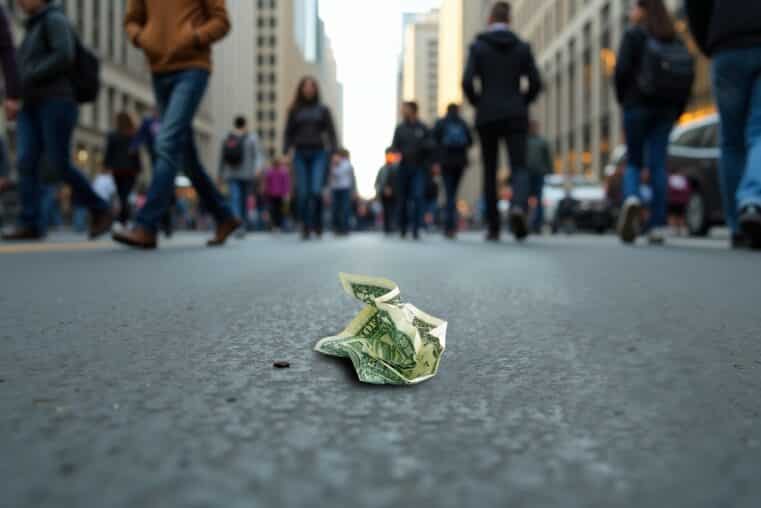
Bondquake 2025: A $1 Trillion Time Bomb Just Shook the Treasury Market – And Almost No One Noticed
If you’ve felt like the financial world has been oddly quiet this week — maybe too quiet — you’re not wrong. Behind the façade of market chatter, tariff squabbles, and political noise, something massive just slipped beneath the surface. Most people didn’t see it. Wall Street barely acknowledged it. And your nightly news sure as hell didn’t cover it.
But what just happened on Monday was the financial equivalent of an underwater fault line shifting — a sudden jolt in the $25 trillion Treasury market that nearly tore through the entire system. We’re talking about the unraveling of a highly leveraged Wall Street scheme known as the basis trade. Sounds dull, right? That’s by design.
Let me put it in plain terms: This “boring” bond strategy is now a trillion-dollar house of cards. And the Fed is watching it with a finger on the panic button.
A Hedge Fund Ticking Time Bomb
At the center of the blast zone is a trading strategy hedge funds adore — the Treasury basis trade. Think of it like flipping houses with other people’s money. The trader buys a Treasury bond and simultaneously agrees to sell a similar position in the future — usually through futures contracts. The difference between the two prices is razor thin. So to make the trade worth it, funds pile on leverage. Fifty, sometimes even one hundred times leverage.
That’s like putting $2,000 down on a $200,000 house — hoping the price moves just enough in your favor before the whole deal explodes. Now multiply that bet across dozens of positions, all funded by short-term repo loans — which, by the way, are also on shaky ground.
Estimates suggest there’s over $1 trillion tied up in this trade right now. That’s double what it was five years ago. But here's the catch: when these trades start to go south — like they did this week — it doesn’t take much for the entire leveraged structure to collapse.
And collapse it nearly did.
Monday’s Shock: Cracks in the System
On Monday, Treasury yields spiked. The 10-year jumped 22 basis points in a single session. That’s a violent move for what’s supposed to be the safest, most stable asset in the world. The 30-year surged even more. According to Bloomberg, this was the kind of swing not seen since March 2020 — the last time the basis trade imploded and forced the Fed to rescue the bond market with a tsunami of printed money.
James Athey of Abrdn called the move “eerily familiar.” Ed Al-Hussainy of Columbia Threadneedle said it outright: this looks like a major unwind of the basis trade, especially in the long-dated maturities where the leverage is heaviest. In trader terms, “that’s where the juice is.” But when the juice turns sour — when repo lending dries up, when futures pricing disconnects from cash bonds — the whole structure begins to shake.
And once one big fund starts dumping, they all dump. A mass exit. Bond prices plummet. Yields soar. Repo liquidity evaporates. And the cycle feeds on itself.
Sound familiar? It should. We’ve seen this before.
The Fed’s Fragile Dance
Here’s the problem: the Fed can’t afford another breakdown in the Treasury market. Not now. This isn’t just about hedge funds losing money. The entire financial system — from mortgages to pensions to corporate debt — relies on the smooth functioning of Treasuries.
So what does the Fed do when the walls start shaking?
First, it pretends everything is fine. Then it whispers to the Wall Street Journal. Then, when things start to break, it rolls out its crisis playbook: backstop the repo market, gobble up Treasuries, cut rates, and claim it's all in the name of “financial stability.”
And just like that, the bailouts are back. Quiet, surgical, dressed in technocratic language. But make no mistake — it’s another rescue mission for the same speculators who’ve turned the bond market into a casino.
Only this time, the stakes are higher, and the fuse is shorter.
What You Must Do Now
If you think any of this ends well, you’re kidding yourself. This is what happens when you let a cartel of unelected central bankers subsidize risk and bail out the losers — over and over again. The Treasury market is no longer a safe haven. It’s a leveraged powder keg.
Don’t wait for the next crack to widen into a chasm. Protect yourself.
Start by downloading Bill Brocius’ free guide, “7 Steps to Protect Yourself from Bank Failure”. This is your blueprint for getting off the grid of the financial system before the next liquidity panic hits.
Better yet, grab a copy of Bill’s prophetic book, End of Banking As You Know It — and seriously consider joining his Inner Circle newsletter for just $19.95/month. That’s where Bill lays out the real-time moves he’s making to escape the coming collapse. I follow it religiously, and you should too.
We’re standing on financial fault lines. You can’t control the quake. But you can control your escape plan.
— Eric Blair











